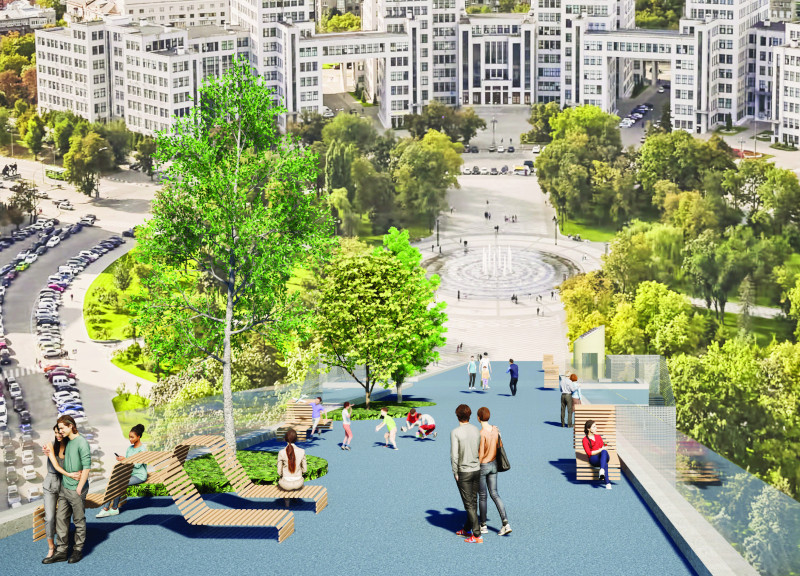5 key facts about this project
In evaluating the project's overall concept, it becomes evident that the architects aimed to create a space that fosters community interaction and individual reflection. This dual focus is reflected in the design, which includes both communal areas and private spaces. The open-plan layout encourages collaboration and social gatherings, with expansive areas that facilitate various activities. Conversely, the inclusion of smaller, intimate spaces provides residents and visitors the opportunity for quiet contemplation, striking a balance that is often challenging in modern design.
The materiality of the project plays a crucial role in its overall character. The architects have chosen a palette that reflects the local context, incorporating materials such as sustainably sourced timber, reinforced concrete, and large expanses of glass. The timber adds warmth and a sense of natural connection, while the concrete provides structural integrity and durability. The glass facades promote transparency and light, establishing a visual dialogue between the interior spaces and the exterior environment. This careful selection of materials not only enhances the aesthetic quality of the architecture but also aligns with sustainable practices by prioritizing eco-friendly options.
Important design elements include the integration of green spaces, which are thoughtfully interspersed throughout the site. These areas not only enhance the project’s biophilic qualities but also serve as vital ecological zones that contribute to the thermal performance of the building. The incorporation of native plants and trees establishes a strong connection with the local ecology, promoting biodiversity while also offering visual relief from the urban landscape. This approach exemplifies how architecture can positively impact both the immediate community and the environment.
The project also showcases unique design approaches, particularly in its use of daylighting strategies. The architects have oriented the building to maximize natural light exposure while reducing reliance on artificial lighting. This enhances the comfort of the occupants and underscores a growing trend in which energy efficiency and occupant well-being are prioritized. Additionally, the design incorporates smart building technologies that facilitate responsive environments, adjusting lighting, heating, and cooling based on real-time occupancy data.
In terms of functionality, the project is designed to accommodate a range of activities. Facilities include versatile community spaces, a well-equipped kitchen, and adaptable meeting rooms that can be tailored to various needs. This flexibility ensures that the space remains relevant and meets the evolving demands of the community it serves.
Moreover, the building’s circulation is intuitively planned, facilitating easy movement throughout the space while encouraging exploration of its many features. The strategic positioning of staircases and elevators ensures accessibility for all users, promoting inclusivity through thoughtful design.
The architectural designs, plans, and sections reveal a meticulous approach to spatial arrangement and user experience. Each detail, from the alignment of windows to the proportion of communal areas, has been carefully considered to enhance the overall narrative of the architecture. Such detailed attention is indicative of a project that not only meets the functional requirements but also aspires to elevate the everyday experiences of its users.
For those interested in delving deeper into the architectural intricacies of this project, exploring the architectural plans, sections, and various design elements will provide a comprehensive understanding of the innovative ideas that underpin this work. This project stands as a profound example of how thoughtful architecture can serve a community while fostering sustainability and engagement with the environment. The commitment to creating a space that is both inviting and practical is evident, inviting further exploration of its various attributes and design methodologies.


 Olga anna Kosterska
Olga anna Kosterska 























